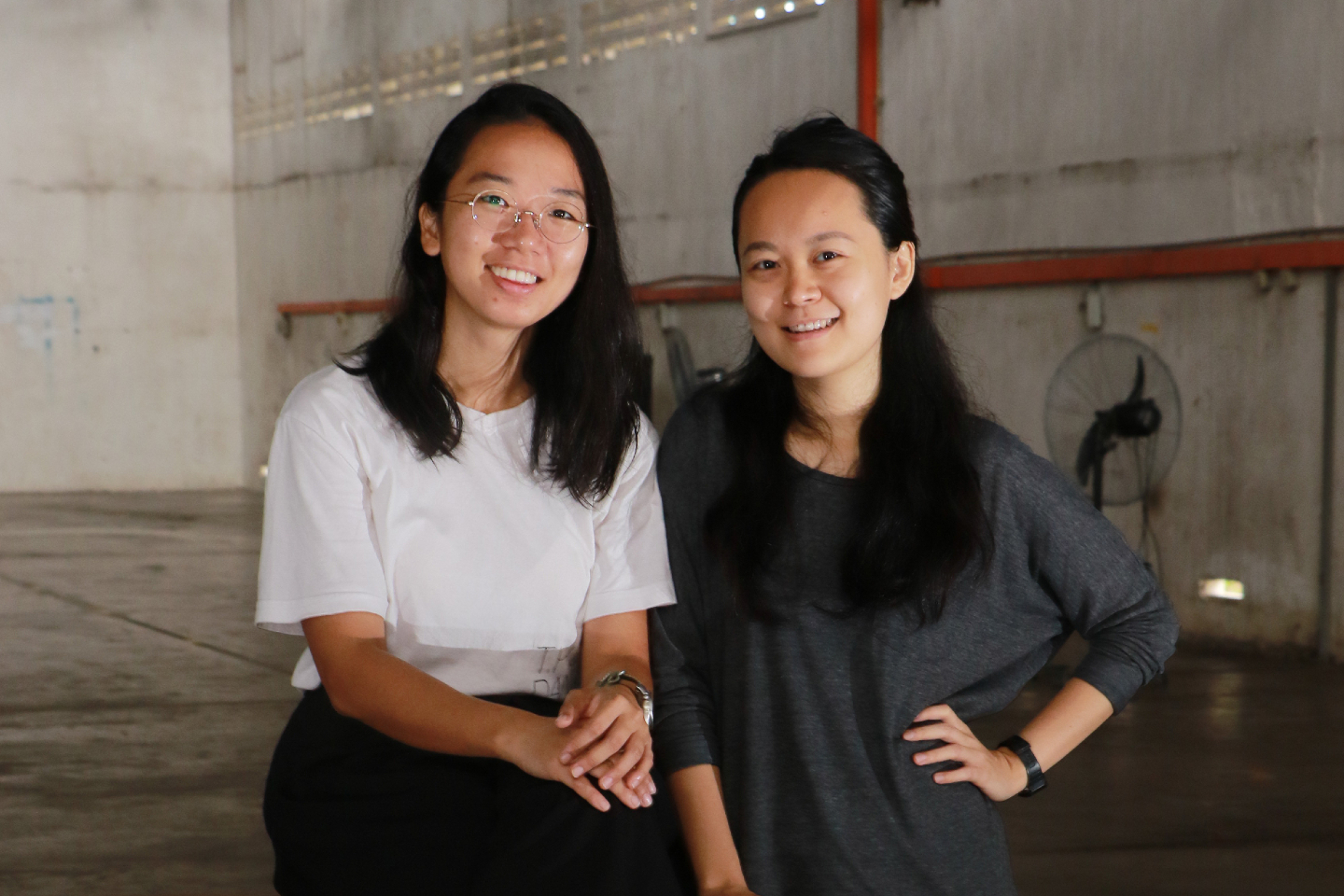
Low and Mah (Photo: Haris Hassan/The Edge)
The morning rain had cooled the air, adding to the serenity of the atmosphere as we step into a warehouse officially known as Gudang Yee Seng 2. The hint of petrichor — that post-rain scent — sets a mood that is worlds away, even though we are just by the side of one of Kuala Lmpur’s busiest main roads.
It is quiet despite the industrial setting and the pitter-patter of light rain is the only sound welcoming us to KongsiKL, a place where it feels like time slows. The scattered old furniture and other items, such as a Chinese chamber pot at the entrance, an old black bicycle, mismatched wooden chairs and worn out tables, only add to the ambience.
Two young ladies sipping tea and having their breakfast on low stools right in the middle of the space is the reason for this visit. “Don’t let this cool weather fool you; it’s usually much hotter, especially in the afternoon,” says Mah Jun Yi, who runs the space alongside Low Pey Sien.
What exactly is KongsiKL? Officially, its eight founders, comprising artists, designers, architects and more, envisioned it as a space to share time, talent and resources — to develop social and artistic projects as well as experiments.
gudang_yee_seng_2_site_specific_exhibition_photo_by_taka_chang_courtesy_of_kongsikl_1_1.jpg
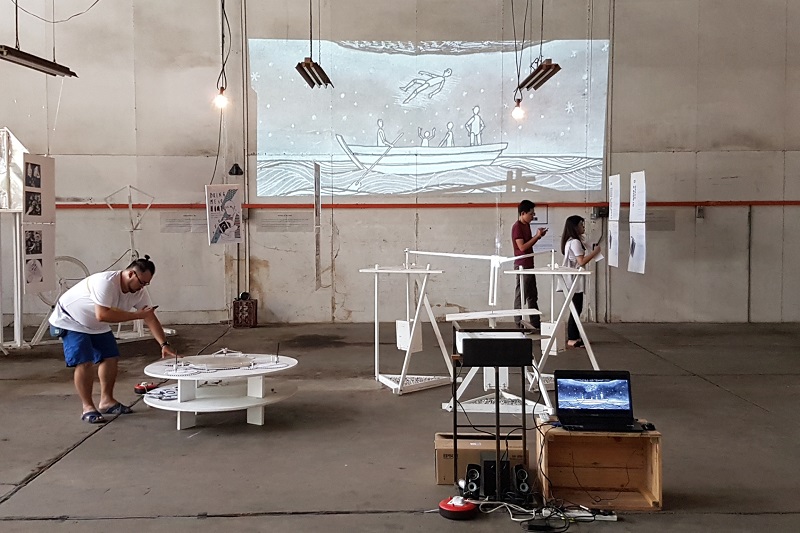
Depending on whether you are cynical or otherwise, this modern-day “kongsi” can be either a lot of hot air or something to champion. But the fact that the space has incubated a dance project that took five awards at the recent Boh Cameronian Arts Awards 2020 is convincing of the latter.
Mah and Low have been instrumental to that journey. “The original vision was quite broad,” says Low, an architect by training who came on board in 2017 when KongsiKL was initiated. “But because the founders, the KakiKongsi we call them, have their respective careers to juggle, it was mostly my previous manager, Doris, and me doing what we could at first; then Jun Yi came in last year.”
The 10,000 sq ft former stainless steel factory is owned by property developer Exsim, which allowed the warehouse to be used free of charge after it was left empty for two years. Though the space was rent-free, there was no money for renovations. First, they got the bare minimum fixed, such as reconnecting the electricity and getting the toilet running. Then, the KakiKongsi called out to friends and others, who created artworks that were auctioned off to raise funds for further upgrades.
This story illustrates the collaborative spirit behind its vision. “The idea is to build this space together [physically and philosophically]. It’s very gotong-royong to begin with, from volunteers for cleaning to donating furniture, farming of the plot we have just outside … even the lighting was installed by volunteers from Taylor’s University when they did an exhibition here,” explains Mah.
_an_expressive_montage_taylors_architecture_graduate_exhibition_photo_by_low_pey_sien_courtesy_of_kongsikl_1.jpg
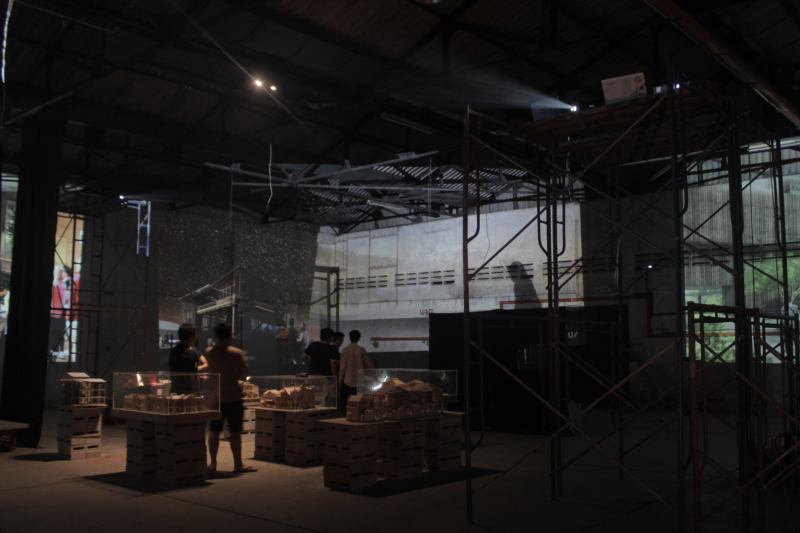
“In 2018, we also established Kongsi Kolab, which was held monthly for some time for people who wanted to start ideas. It’s not just about sub-letting space, but we wanted to create a community,” Low chimes in.
As the de facto gatekeepers, Mah and Low shoulder the burden of staying true to this original vision, even if it means being more selective of the collaborations they partake of or programmes they put out.
Mah shares that KongsiKL has been in search of its identity. “The more people you meet, the more you try out different things, the more you get an idea of who you are. I think we are the sum of all our attempts so far.”
Yet, the beauty of a creative community is also how it evolves and leads organically to new things. Kongsi Kolab may have been partly a reason to hang out with friends and enjoy meals together, but it has nevertheless birthed productive projects. For one, a weekend kitchen run by one of the members has since moved on to a permanent venue elsewhere.
By far the most defining project to emerge is Seni Tiga, a series of performances started in 2019 that have become synonymous with KongsiKL and reshaped the space as a performance venue, while cultivating a community of dance artists.
Initiated by veteran dancer Loke Soh Kim, a KakiKongsi founder, the idea of a series of performances combining three art forms — movement, visuals and sound — came during a Kolab meeting, when she did an impromptu “jamming” session with other members, including visual projection artists and musicians.
dances_in_ruins_photo_by_taka_chang_courtesy_of_kongsikl_.jpg
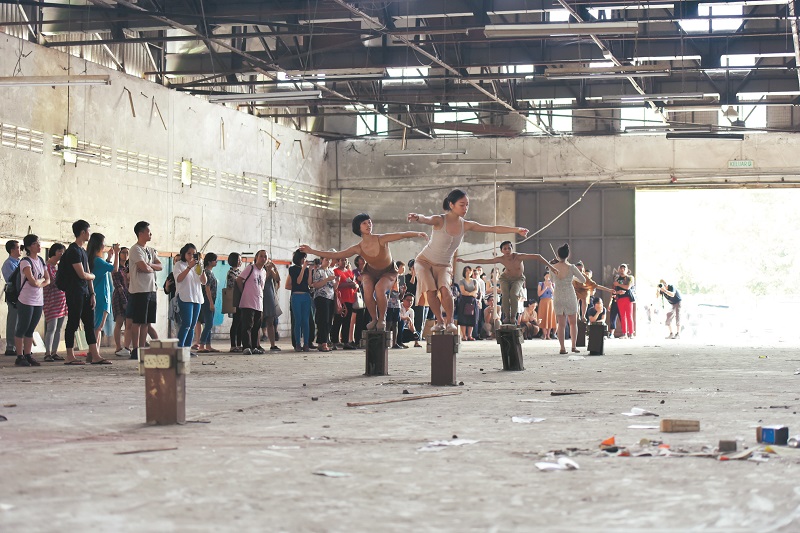
As producer, Loke helms Seni Tiga, whereas Mah and Low double as her assistant producers. In reality, she acts more as an adviser. The assistant producers reach out to various dancers and artists, bringing together those from the different disciplines to create each performance’s collaboration. They also try to make the vision of the artist a reality in whatever way needed, from marketing to, literally, making it rain.
Justin Lee is an architect and Kongsi Kolab member with whom Loke collaborated for Seni Tiga’s first performance. When Lee came up with the idea of producing rain in the warehouse, Mah and Low brought in the people who could make it happen.
The result is Impermanence, the 10th performance for Seni Tiga, which garnered three awards — Best Set Design, Best Music & Sound Design and Best Multimedia Design. “We put 18 tonnes of rocks in the space and created fire and rain,” Mah says.
With the Movement Control Order (MCO) and Covid-19 pandemic affecting their plans for the year, Mah and Low’s immediate focus is to get back on track and sustain KongsiKL financially. Free rehearsal time on Sundays for dancers, some workshops, screenings and jamming sessions are already planned or back in place.
Too many possibilities can be a challenge for a space such as this. “If a pub wants to rent from us long term and open here, for example, I have to think: Will KongsiKL still be KongsiKL then? Surely, they would have a different imagination of the space than we would,” notes Mah, who is also a trained architect with experience in community projects relating to public and art spaces.
seni_tiga_10_impermanence_photo_by_mah_jun_yi_courtesy_of_seni_tiga_1_1.jpg
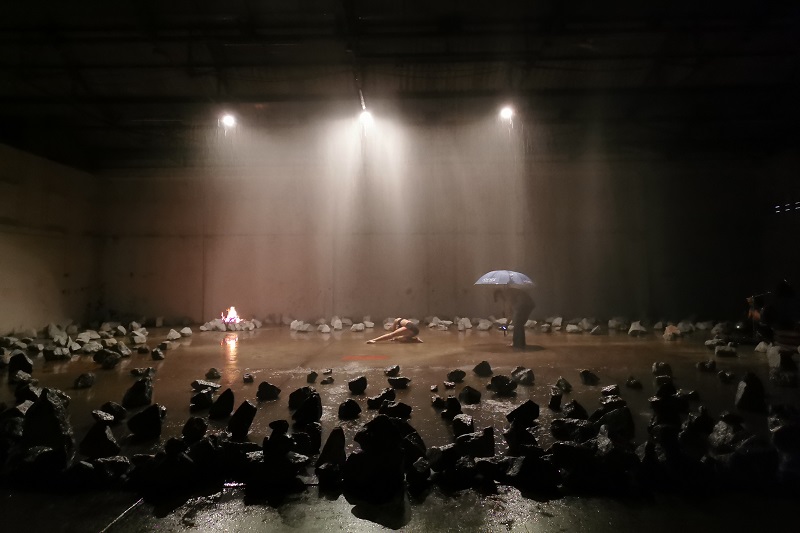
“People don’t just come into a space because it’s there. You need to sculpt a vague idea into something where everyone can get something out of, to bring people here in a meaningful way,” she continues.
In city living, where space is a precious commodity and every inch designated and purposed, set in its boundaries, a large, raw and empty space can be jarring and disruptive. Perhaps unsurprisingly, not everyone is excited about its potential. “People come and look at it, and they hesitate. Some can’t do without infrastructure. Some get overwhelmed at how to use it. If it’s a performance, you also need a lot more to hold the audience’s attention without letting the space swallow you,” observes Low.
Both agree that keeping it that way is both the challenge and the reward. Low, who stayed at the warehouse for three months during the MCO to cultivate her own artwork as well as test out the possibilities for art residencies, says, “From our experience, KongsiKL as a space has to be flexible. If it wasn’t, Seni Tiga wouldn’t have happened. That flexibility helped us put different things together and make it happen.”
Mah agrees, “You actually have to do a lot in order not to change things. As architects, our instinct (if we had money) would be to upgrade the space. But, through these three years, we see how important ‘as it is’ is for creativity. Limitation also means freedom to challenge the status quo, and that can be defining.”
This article first appeared on July 20, 2020 in The Edge Malaysia.


